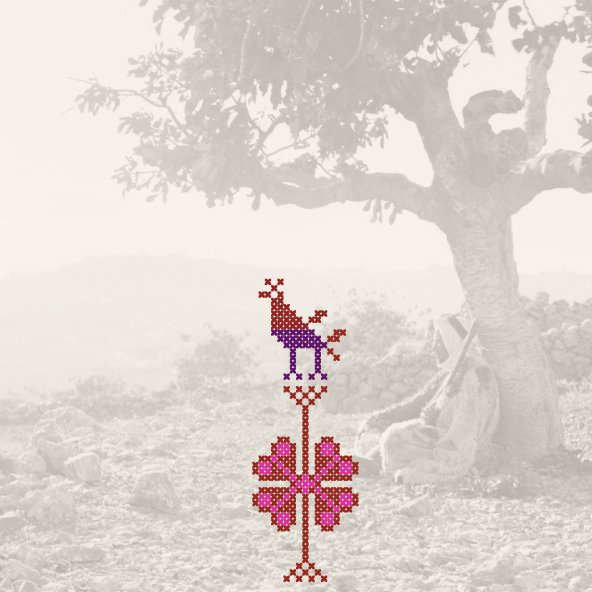
Palestine.
It’s all in
the patterns.
Ramallah Women in front of their house wearing their everyday attire; 1930is
THE PALESTINIAN THOBE
The Palestinian dress, or thobe, is the native dress of the indigenous Palestinian village and Bedouin women. It was well known to the world for its picturesque appearance and unique craftsmanship. According to the different regions of the country these dresses had different identities in terms of style, shape, usage of colors and embroidery. Around one hundred years ago, each village in Palestine had its own fashion style and identity. In some areas such as the Galilee in northern Palestine and Nablus region, the dresses were made of silk textiles with little or no embroidery. In all the other areas of Palestine the festive dresses were exquisitely embellished with embroidery of different styles and patterns. The embroidery in Palestine was called tatreez, today tatreez al falestini. Every woman embroidered her dresses and each could take several months to complete. The patterns and motifs used had symbolic meanings and reflected the beliefs and values of that time and were often meant to protect the wearer from evil.
left: Ramallah dress; 1880s right: Gaza area dress; 1930s
Widad Kawar Collection
Most Palestinian girls started to learn tatreez at an early age. The skill of embroidery and the meaning of the patterns was passed down from mothers to daughters in each village. Every girl began working on her trousseau at around the age of 12 years with the help and guidance of the elders around her.
Ramallah women embroidering; 1920s
All the dresses consisted of several parts that were sewn together. The main areas of embroidery were on the chest - qabbeh, which was the most important part of the dress, the sleeves – kum, the side – banayek and the back – dyal. The patterns used on these parts were arranged in clusters with different sequences of border arrangements.
The anatomy of the Palestinian dress
More to explore
-
Jordan
The Jordanian dress, or thobe, was worn by bedouin, village and town-dwelling women alike. Some dresses measured over 3 meters in length. Their embroidery shared some of the motifs of bedouin woven carpets.

-
Syria
Once a center for weaving rich textiles, Syria influenced dressmaking all over the Levant. Its dresses came in a dazzling variety of colors and interwove Arab, Ottoman and European influences.






